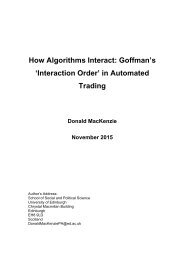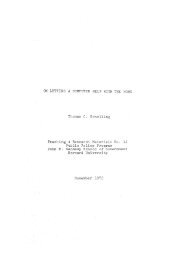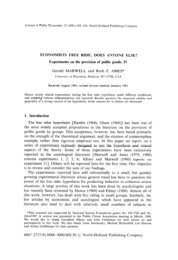n3-al-mukhatabat-journal
n3-al-mukhatabat-journal
n3-al-mukhatabat-journal
Create successful ePaper yourself
Turn your PDF publications into a flip-book with our unique Google optimized e-Paper software.
6.0 Handling the Discrepancy Between Belief and Practice<br />
Given the close relationship between belief and practice, in relation to<br />
models, what happens when there is a ‘mismatch’ between the two? What<br />
happens for example. When a scientist accepts a model in terms of ‘practice’ but<br />
not ‘belief’, ‘techne’ but not ‘episteme’, or ‘reference’ but not in terms of its<br />
‘sense’? This can be most clearly seen in the case of the controversy over the<br />
Copernican model in the history of astronomy. Although the Copernican model<br />
can explain the astronomic<strong>al</strong> data as well as the Ptolemaic model, if not better,<br />
yet it was rejected by Catholics who were committed to a scriptur<strong>al</strong><br />
understanding of physic<strong>al</strong> re<strong>al</strong>ity. In this particular case, two options were open:<br />
(i) the articulation of an <strong>al</strong>ternative model in the form of the Tychonic model to<br />
match the empiric<strong>al</strong> scope of the Copernican model, and (ii) the formulation of<br />
an instrument<strong>al</strong>ist philosophy of science to interpret the epistemologic<strong>al</strong> status of<br />
the Copernican model. In fact this form of response became the prototype of<br />
future responses to such crises involving belief and action in relation to models.<br />
At the scientific level, the response is to create an <strong>al</strong>ternative model or theory<br />
with an agreeable ‘sense’ to account for the ‘reference’. At the philosophic<strong>al</strong><br />
level, the strategy is to articulate a non-re<strong>al</strong>ist philosophy of science to enable<br />
the adoption of the model in terms of practice, but withholding belief or an<br />
ontologic<strong>al</strong> commitment to the model because of its disagreeable ‘sense’.<br />
7.0 Conclusion<br />
Models therefore, serve a du<strong>al</strong> role; a scientific role and a cultur<strong>al</strong> role. In<br />
its scientific role, it acts as a ‘paradigm’ that guides scientific research as well as<br />
function as a foc<strong>al</strong> point for group identity and <strong>al</strong>legiance. In its cultur<strong>al</strong> role it<br />
serves as a ‘symbol’ initi<strong>al</strong>ly for the scientific community that first creates it, and<br />
eventu<strong>al</strong>ly diffusing to the rest of society. However, as ‘symbol’ it becomes<br />
problematic for those who do not accept its symbolism- for example, the case of<br />
the reception of the Copernican model by the Roman Catholic Church in the 17 th<br />
AL-MUKHATABAT Numéro 03 Année 01/2012 لىولأا ةن سلا 30 ددعلا تابطانا<br />
173<br />
ISSN: 1737-6432







